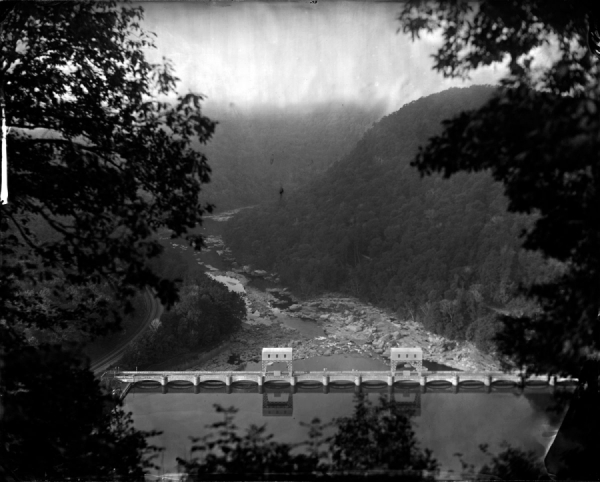THE OXFORD AMERICAN: I was three years old when the Killer Floods hit West Virginia. We were spared, my family and I. My parents had recently bought a stone cottage in a hilly Charleston neighborhood with great schools. Dad had just graduated from law school. We lost nothing, while thousands of our neighbors were ejected from their homes into the icy November waters that claimed sixty-two lives; the 1985 storms still sit on the short list of the most costly in U.S. history. In the aftermath, newspapers accumulated the miracles and spectacles. An organ caked with mud, drying before a church. The body of a drowned deer woven into the under girders of a bridge. Two nineteenth-century mummies that had floated away from a museum of curiosities in Philippi, recovered from the river.
None of this suffering was ours. “Ours.” My mom—a ginger from the low country whose freckles I was born to—packed me up for a week of relief work in a hangar at the National Guard Armory. Her task was to deal with the hills of black trash bags, sent to Appalachia from abroad, stuffed with clothing that recalled dank basements and dead people’s closets. For endless hours she sorted it into piles by age, size, sex, and degree of suitability. Meanwhile, I dressed up in the gifts of the well-meaning and the careless. Stiletto heels. Crumbling antique hats. Tuxedoes, gowns, belts, and bikinis. “Nobody wants to wear your sweaty old bra, lady,” my mom muttered to one of these imagined do-gooders, tossing it aside. On the contrary—I did, very much! I modeled the torn, the stained, and the unusable, cracking up the other volunteers. Mom saw how little of the clothing was functional, how much time was being wasted in the sorting, but she was desperate to be of use.
Disaster binds our people to this place and each other, or so the story goes. Think of the one hundred and eighteen mine disasters our state has suffered since 1894, the fires, explosions, and roof falls. Or the floods, whether “natural”—like the one this June that killed at least twenty-three people (as I write this, my friends come home from recovery work, stinking of contaminated mud)—or those induced by humans, like the coal waste dam that burst at Buffalo Creek in 1972, when one hundred and twenty-five people drowned in a tsunami of slurry. (Pittston Coal called it an “act of God.”) Other disasters are less visible, inside our bodies even: the rolling crisis that is black lung disease claims a thousand lives every year, while an addiction epidemic seems to be robbing entire generations of our children. West Virginia’s drug overdose death rate is the highest in the nation. Then there is the toxic discharge: from the 2014 Elk River chemical spill that poisoned the water of 300,000 residents to the micro releases leaking daily from the sediment ponds that serve mountaintop removal sites.
Appalachian fatalism wasn’t invented out of thin air. If your list of tragedies gets long enough, you start to think you’re fated for disaster. And maybe the rest of the country starts to see you that way, too. I watched a documentary last year about the outsized influence of extractive industries here. It was a well-rehearsed narrative, this litany of disaster—land grab, labor war, boom, bang, roar—on and on in the dark theater. I admired the film in some ways—the bravery of naming each and every pain, the courage of its makers to pass into the tunnel of it, to point fingers along the way. But as I sat through this latest iteration of Appalachian grief writ large, I began to seethe—not at some alleged oppressors, but at the narrative itself. I cannot live inside the story of this film, I remember repeating to myself, like a chant. That can’t be my story because nothing lives there.
Admittedly, there’s a spellbinding allure to disaster, close cousin of the sublime. Hypnotic and wordless, the disaster repulses even as it propels one’s attention toward it. I know, because I’m victim to its seduction, too. I live five miles from where the Hawk’s Nest Tunnel tragedy unfolded, along the New River Gorge in Fayette County. Hawk’s Nest is an extreme in a class of extremes—the disaster where truly nothing seemed to survive, even in memory—and I have made a home in its catacombs. The historical record is disgracefully neglectful of the event, and only a handful of the workers’ names were ever made known. What’s more, any understanding of Hawk’s Nest involves the discomfort of the acute race divide in West Virginia, seldom acknowledged or discussed. Indeed, race is still downplayed in official accounts. Disaster binds our people, maybe. But what if you’re one of those deemed unworthy of memory? MORE

